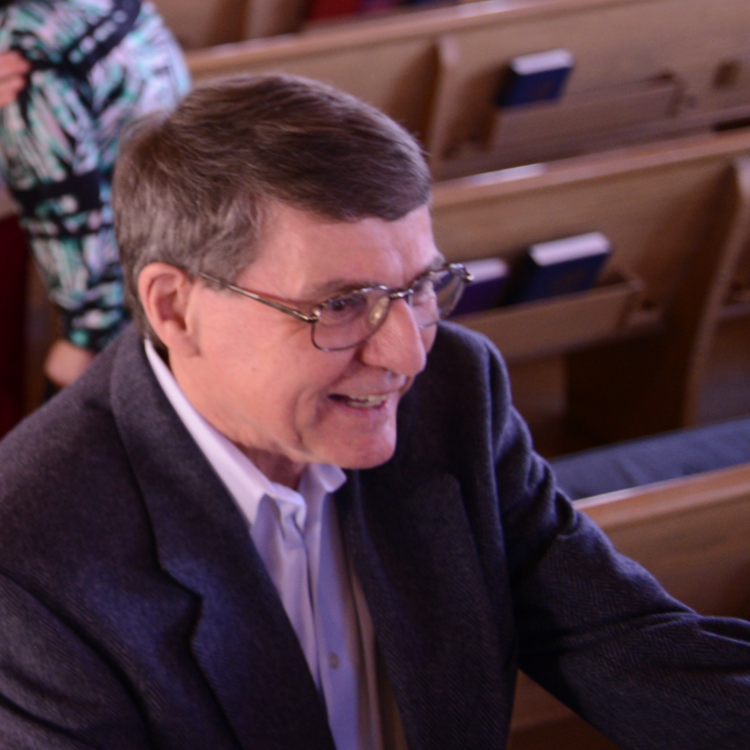Our History
Bethesda First Baptist Church was established in September, 1938. At this time NIH was simply farm land. The chapel was the first sanctuary for BFBC.
In 1953 the educational building and the current sanctuary with the single stained-glass window in the front entitled “I am the light of the world,” were constructed.
BFBC established a mission in Rockville which later became Twinbook Baptist Church. The Minister of Christian Education at BFBC became the pastor of Twinbrook Baptist and remained there for 30 years.
Sometime in the 50’s or 60’s BFBC established the Bethesda Cooperative Nursery School to provide a less expensive childcare alternative for lower income families. By volunteering in the school, the parents were given reduced tuitions. There were many baby boomer children in the church at this time, many of whom attended the Bethesda Cooperative Nursery School.
Dr. John Gates was the pastor during the 60’s and was active in the Civil Rights Movement where he joined in several freedom marches.
During this time BFBC took a strong stand against racism and welcomed its first black members. This event led to many members departing BFBC.
In the 1980’s individuals funded the entire array of smaller stained-glass windows which portray the creation story. Brenda Bellfield, a local artist, who designed about 20 stained-glass windows for the National Cathedral, designed all of the BFBC windows including the one at the back of the sanctuary.
Jack Averill was the pastor of BFBC from 1971 to 1991.
During this period, BFBC was an open ecumenical congregation that was duly aligned with both the American Baptist and Southern Baptist Conventions. The ties to the Southern Baptist Convention were dissolved in the 1970’s when the strongly conservative leaders in the Convention took over the seminaries and purged them of “liberals,” by requiring every professor to sign the Baptist Confession of Faith that included the statement of the infallibility of Scripture. (Interestingly, this occurred just prior to the Moral Majority becoming a national political force.)
Beginning in the 1970’s and continuing through the 1990’s, BFBC assisted in sponsoring refugees from Vietnam, Croatia, Slovakia, Central American and Mexico, including bringing the entire family of their janitor to the US.
In 1988, the associate pastor, John Burns, proposed that BFBC take the lead in establishing an organization called “Bethesda Cares” that would be funded by all of the local churches with the mission to care for the homeless and working poor of the city. BJ Rowlett (a longtime leader of BFBC) and Sue Kirk (the first Director of Bethesda Cares) worked together for 14 years to maintain a Monday – Friday lunch program for the homeless and working poor. This lunch program was hosted by BFBC for the first two weeks of the month and then moved to the Bethesda Lutheran Church for the subsequent two weeks. In about 2015-16 this Food Program moved to CiB permanently.
BFBC attracted many people from nearby National Institutes of Health and various federal agencies, many of them leaders in their careers: Medicine, Immunology, Cancer Research, Military Intelligence, FBI, Nutrition, State Department, Atomic Energy Commission, etc. There were many post-docs and students who attended only for a few years but the church was able to manage despite this transiency because of a solid group of strong contributors.
One of the key leaders of BFBC was an original founder of the Interfaith Housing Alliance that strengthens communities by providing affordable housing opportunities and supportive services to improve the quality of life and economic stability for seniors, working families and individuals.
By early 2000’s, the leadership of BFBC had gotten older and could no longer assist in the critical functioning of the congregation. The choice before the congregation was to close the doors or to restart the church as a multi-denominational contemporary church. The church voted unanimously for the restart, but few older members were prepared for the substantial changes that began to occur. It was heartbreaking to see the people who had put so much of their lives and love into BFBC now feeling disenfranchised. The organ was no longer used in the service; the service was now projected onto a large screen that covered much of the stained-glass window; and the service was much more informal, and communion was offer each Sunday.
In 2003 – 2004 CiB was started with the assistance of Brian Mclaren and a group of Trustees from BFBC and Cedar Ridge. Two of the youth leaders from Cedar Ridge became co-pastors of CiB.
In 2013, Pastor Todd Thomas led our congregation to be fully accepting of LGBTQ community.
A Journey toward Inclusiveness
Bethesda First Baptist Church moved from being an all-white Baptist church in 1938 to a church that welcomes people of all races (60’s/70’s), to church that is ecumenical and open to women in ministry (80’s/90’s), to a church that is now multi-denominational, multicultural, open and inclusive.
Throughout this eighty-year journey, our church has continually sought to care for those who are in need and tried to find ways to minister these people in our community, from The Bethesda Cooperative Nursery School, to The Interfaith Housing Alliance, and The Bethesda Cares Lunch Program, our church has found creative ways to serve our community.
A native of Illinois, Gary Kunz earned his B.S. in chemistry at the University of Illinois, a Master of Divinity at the Southern Baptist Theological Seminary, and a Ph. D. in biochemistry from the University of Louisville.
Gary and his wife, Margarett, arrived in Bethesda in 1979 where he did a post-doc and she worked as a librarian at the National Institutes of Health. Subsequently, Gary worked for a biotechnology company in Gaithersburg, MD in new product development, and then moved to the U. S. Patent and Trademark Office for the next 30 years where he worked as a supervisory patent examiner in the areas of organic chemistry and biochemistry.


